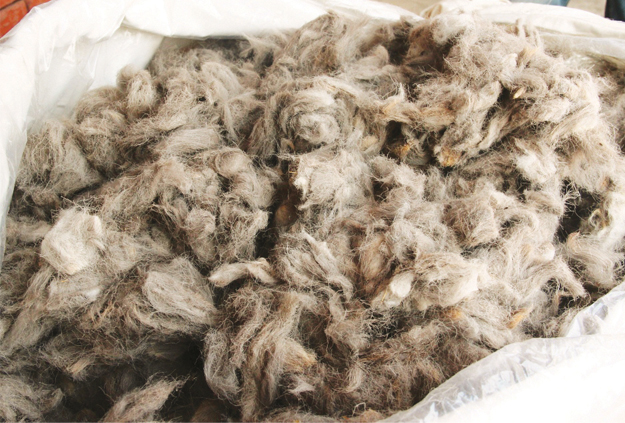Shahtoosh is the epitome of luxury in the world of shawls. Shahtoosh is Persian for “the king of wools” and has been the prized possession of many a fashionable lady for centuries.

Genuine shahtoosh is characterized by its gossamer, sheer gauze-like quality. The fabric is unbelievably light (a complete shawl weighs under 13 grams), yet it is very warm.
The fiber of a shahtoosh is so fine that it is one-sixth of a human hair. Common belief states genuine shahtoosh can be identified by passing it through a wedding ring. The real deal will easily pass through. 
However, textile technology is changing rapidly and many synthetic fabrics can also do this trick.
Shahtoosh has a characteristic dull gold sheen, and is rarely dyed or heavily embroidered.
Genuine shahtoosh is very rare and expensive. The selling price of a shahtoosh shawl ranges from USD $2,000 and above depending on the shawl size and quality. More importantly, shahtoosh is illegal.
Shahtoosh wool is derived from the Tibetan antelope, or chiru. Shahtoosh has done to the chiru what leopard skin did to the big cat, and ivory bangles did to elephants. 
Mother nature gifted the chiru their characteristic thick woolen coat to shield them from the freezing altitudes of Tibet, but it was the prized short fine hair beneath the visible coarse layer that has brought this species to its downfall.
Three to five chirus have to be killed to make one shawl. Over 50 years ago, over a million chirus dwelled the Tibetian mountains. Today this number has been drastically reduced to just over 65,000.
Shahtoosh is smuggled from Tibet via Nepal into Kashmir, India (the shawl weaving capital of the world). 
In Kashmir it is tradition for a mother to give away a prized shahtoosh as a part of her daughter’s dowry, but it is not these age-old traditions that have brought about the rapid downfall of the chiru.
The 1980’s saw a fresh wave of fashion interest in this fine wool and the worldwide demand far exceeded supply.
WWF set up the CITES project (Convention on International Trade in Endangered Species) and today the chiru is one of the most protected species alongside the Chinese giant panda. Yet a clandestine market exists making it available to heartless (or uninformed) consumers who are ready to pay a very hefty price in the name of fashion. 
Do not let lucrative selling fool you. Chiru have to be slaughtered to create shahtoosh. Choose other fine wools over shahtoosh (pashmina and yak wool are derived from combing the wool and don’t involve slaughtering). If you know someone who owns shahtoosh, or is thinking of doing so, educate them on the plight of the chiru.
Fashion comes and goes, and we should not allow our narcissism to cost an entire species.
Images derived from Google Search.









